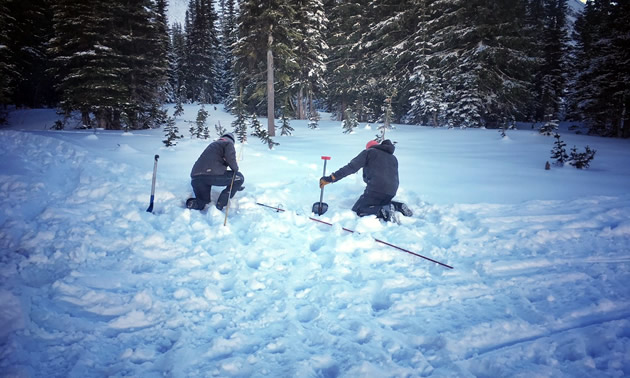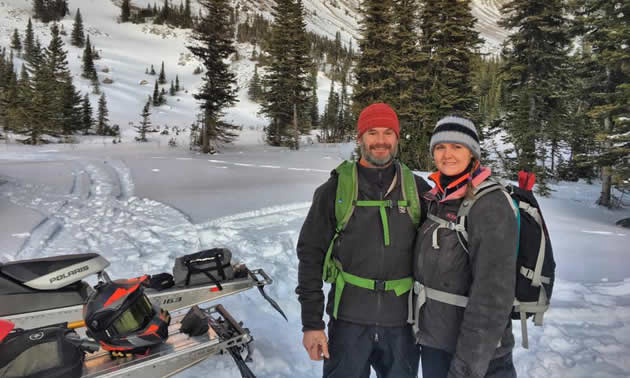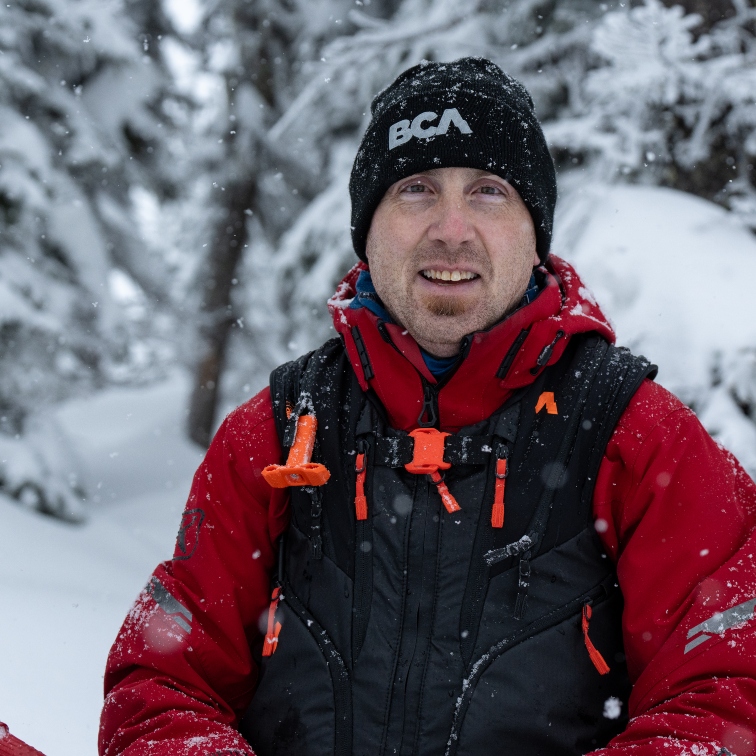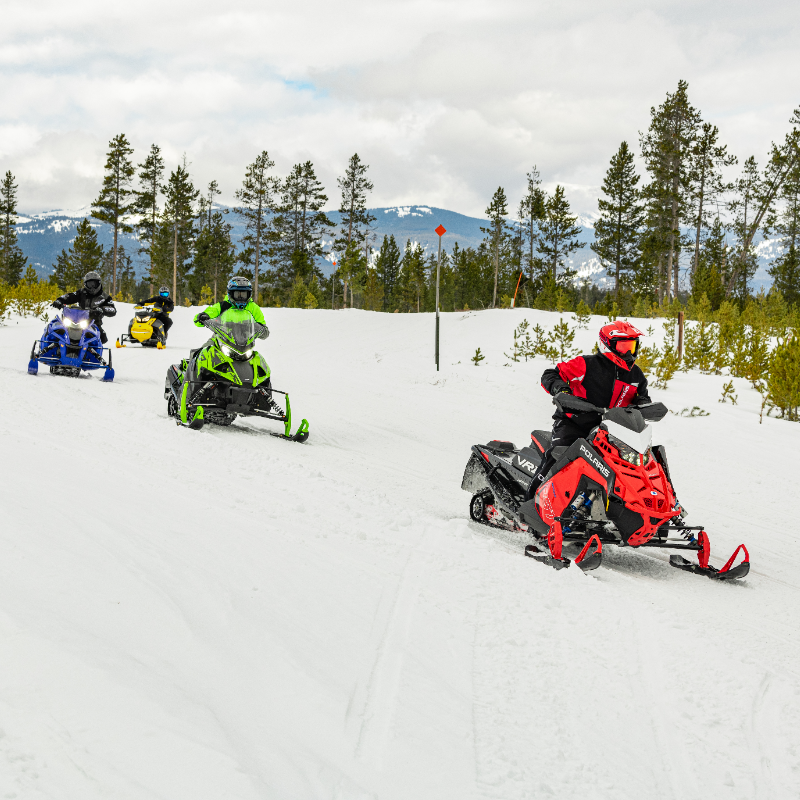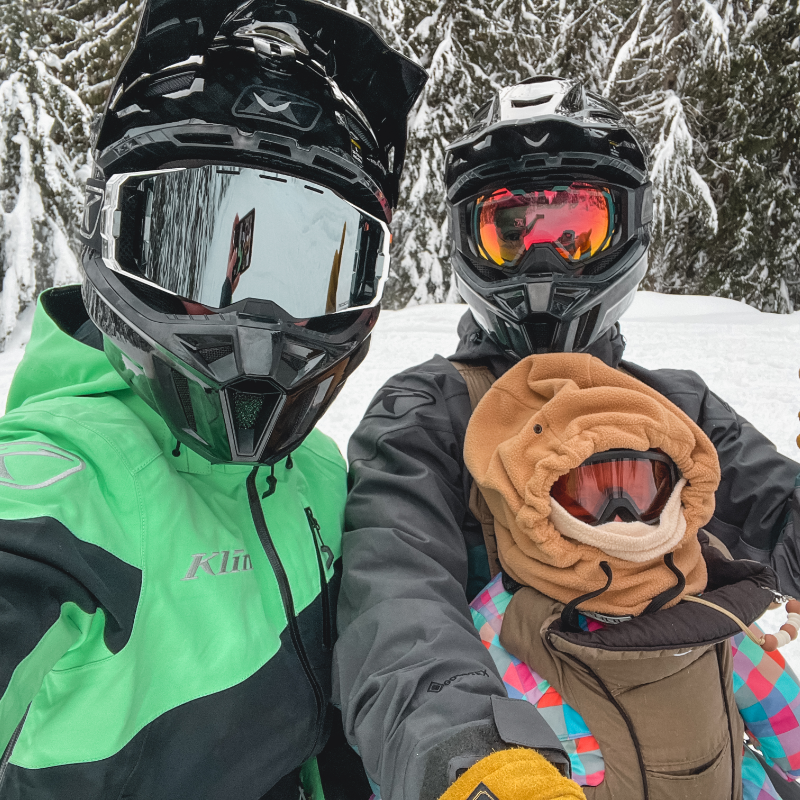“Progress” is a word that comes up a lot in mountain snowmobiling. What exactly does it mean? Well, to some, it’s going from keeping your butt on the seat and two skis eternally on the ground to standing up, shifting your weight and learning how to get your sled on edge. For others, it could mean perfecting the downhill U-turn, sticking a re-entry or learning how to send it. My point is, there are lot of ways we as backcountry freeriders can advance our skills.
I am no pro, but over the last few years, my riding has progressed to the point where I feel comfortable in steeper, off-camber terrain. No longer sticking to my husband’s tracks (read: trench), I look for my own lines and ways to challenge myself. Has my level of safety training kept up? Sadly, no.
Realizing I needed to rectify the situation, I signed up for a December 2017 Companion Rescue Skills Course (CRS) through Elk Valley Snow Shepherds (EVSS) in Fernie, B.C.
Why the CRS? Having taken a sled-specific AST 1 five years ago, the CRS was to serve as a long overdue refresher and the next logical step in working toward the goal of completing a four-day AST 2 course. My husband and riding partner signed up with me and since it was a private session, upon request we were able to benefit from material in the Managing Avalanche Terrain course as well.
Our instructor, Justin Boehm, who owns EVSS with his wife, Nicole Matei, met us at the Corbin Creek Staging Area east of Fernie. The course began with a discussion, based on the day’s avalanche bulletin, about problems we may encounter. Emphasis was placed on how we, as a group, would select terrain in response to changing weather conditions throughout the day. We also reviewed the Avalanche Terrain Exposure Scale, Avaluator and other tools from Avalanche Canada. It became apparent in the first 10 minutes that more training was exactly what I needed. A gear check, which included a trailhead transceiver test, and we were off.
About 15 minutes later, we turned off the main trail and followed a single-track through the trees into the Rain Gauge area. This was my first time up Corbin Creek and my first ride of the season. Being surrounded by the rugged peaks of the South Rockies felt like coming home. While I was revelling in the beauty, Boehm asked for observations made on the trail ride in. I cited the obvious but completely missed the layer of surface hoar in the trees, a problem that has and may continue to cause instability in the snowpack.
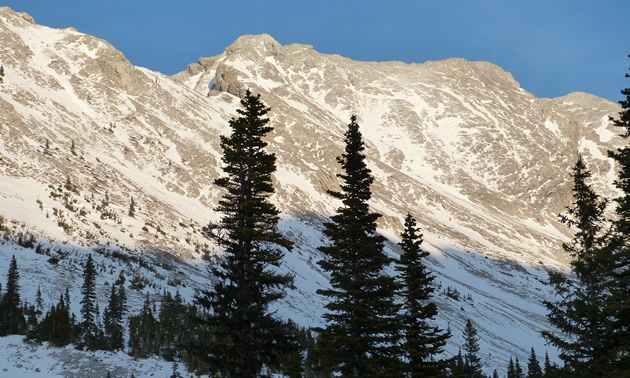
Next, we reviewed the steps a rescuer should take if an avalanche were to occur. Again, I answered incorrectly. Before entering the scene, the rescuer needs to make sure it’s safe and that there is no chance of a second or even a third slide happening. Along those lines, there are some weighty decisions that need to be made, especially if you happen upon an avalanche and it’s not your group that was involved.
We tested the range of our beacons, discussed available makes and models and went over our shovelling technique. Then came the fun part. Boehm threw many different rescue scenarios at us, from one- and two-victim burials to multiple burials. He changed the depth and location of the transceivers and just when we were feeling good about our beacon search and probing techniques, he’d switch it up, driving home the point that you can never take what you know for granted. Being efficient at companion rescue takes a ton of practice and even then, Mother Nature can throw something unexpected at you.
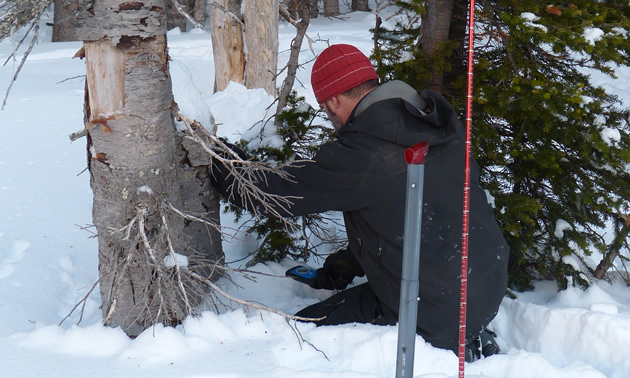
Speaking of Mother Nature, there is no discrimination between who can and cannot be caught in an avalanche. Even the experts have made mistakes—which brings me to another important topic we covered: group management.
Everyone in your group needs to be on the same page, from start of the day to end of the day. Of course, we also talked about risk tolerance and how it will vary from rider to rider. That’s why it’s important to ride with people who have the same or better level of training and tolerance as you. That being said, there may be times when you do find yourself riding with other people whose risk tolerance or level of training is different than yours. In this case, your biggest responsibility as far as group management goes is to not let yourself get coerced into a decision you feel is wrong.
Boehm gave us plenty of information for one day, but he never did give us the secret formula for sledding in avalanche terrain. Fact is, there is none. It’s not an exact science because there are so many factors, especially the human factor, to consider.
At the end of the day, I felt much more confident in my companion rescue skills and inspired to practise more and advance my training as my riding skills continue to progress.
